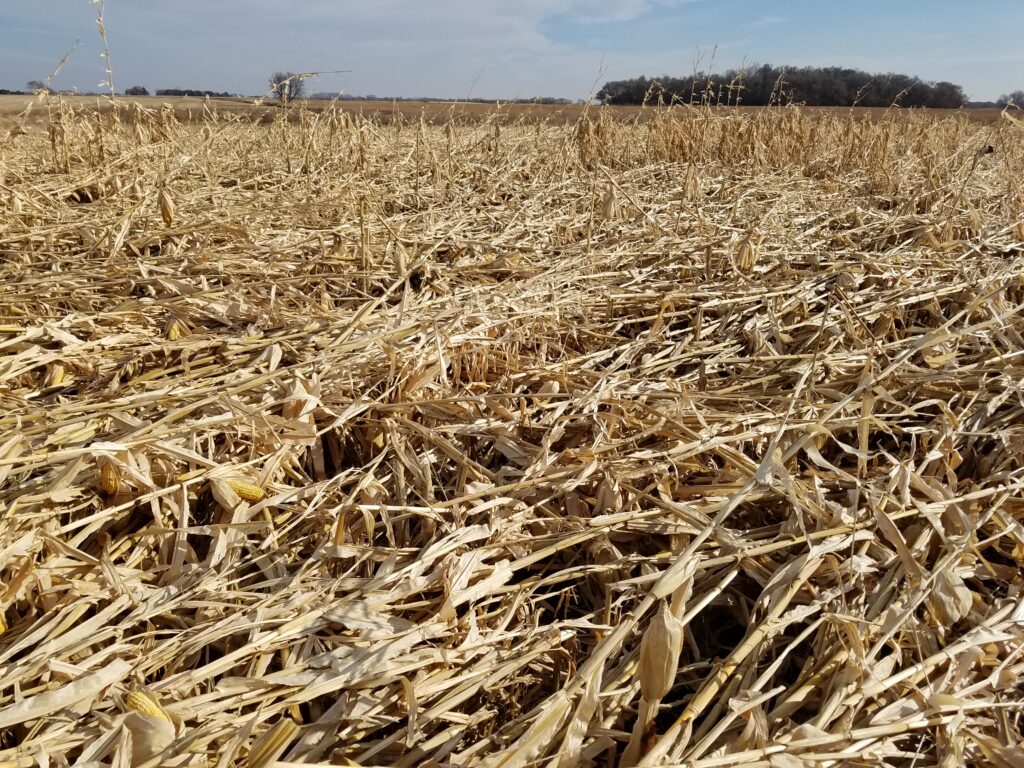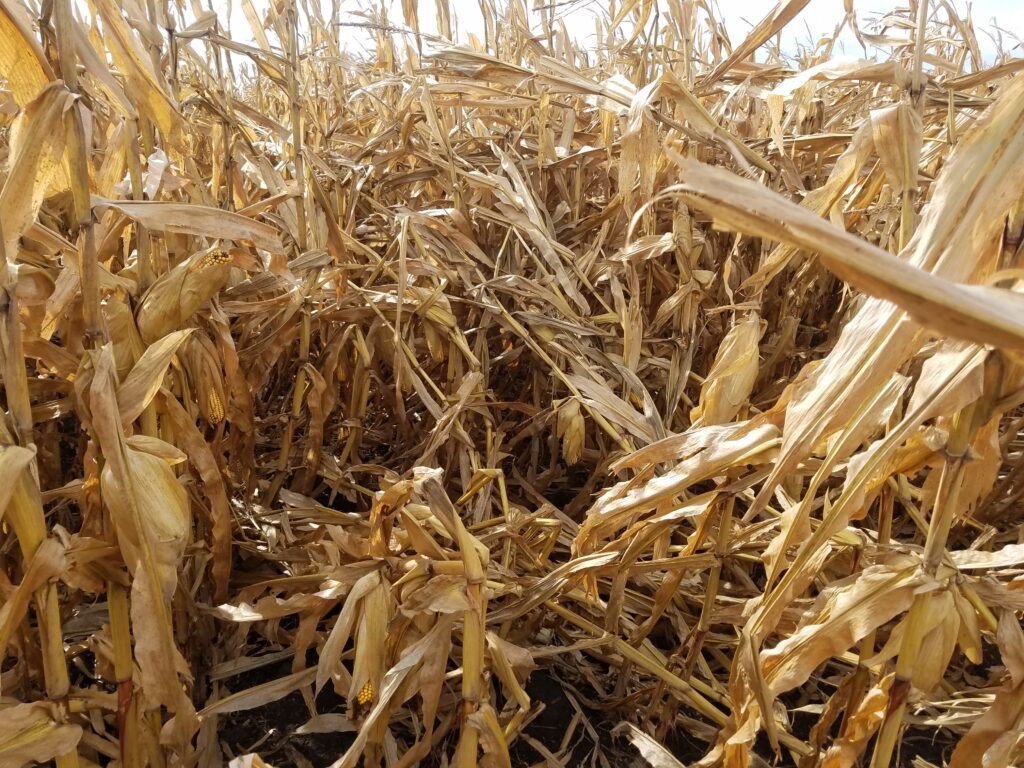Check for Corn Stalk Rot Before Harvest
Dennis Klockenga, CCA, ProfitProAG Crop Management Consultant • 320-333-1608 (cell)
If drought conditions hit your area this summer, there’s a good chance stalk rot might be lurking in your fields. How do you know if your corn crop is at higher risk for lodging this harvest?
Developing corn kernels place a very high demand on the plant for sugars. Stress slashes the rate of photosynthesis, which reduces the amount of sugars that the plant is able to produce. If the plant is unable to keep up with kernel sugar demand, the plant can begin to redistribute sugars from stalk tissue. This predisposes the plant to stalk rot, which increases the likelihood of lodging.
If that weren’t enough, a lack of soil moisture in many areas in 2021 also limited the amount of soil nutrients that could be dissolved and taken up by the corn plants.
“Anywhere that experienced major drought is probably seeing some cannibalization with their corn, especially on lighter soils,” says Dennis Klockenga, a crops specialist with ProfitProAG.
Try a pinch or push test
If you’re wondering how much stalk rot might be in your fields, use a pinch test and a push test. Check 20 random plants from five different spots in the field. For the pinch test, pinch stalks toward the base, below the lowest node, to check for firmness.
“I could practically touch my fingers together when I was doing a pinch test recently in some fields with stalk rot,” Klockenga says. “Moisture levels in your corn might be a lot lower than you think.”
For the push test, hold your arm out from your body, and push the corn plant to a 45-degree angle to see if the stalk holds up, or if its bends or breaks. There’s a significant lodging potential if 10% to 15% of the plants fail your pinch or push test.
Also, factor in the unusually hot temperatures occurring across the Corn Belt this fall. “When you have dry days with strong winds, the potential for lodging goes up even more,” Klockenga says.
I’ve got stalk rot. What now?
The pinch tests and pull test results from your fields can help you prioritize which fields to harvest first. “In fields with stalk rot, it’s better to harvest this corn at 25% moisture, for example, than waiting for it to dry down to 20% moisture,” Klockenga says. “No one wants to harvest lodged corn.”


Click here for the print friendly version
